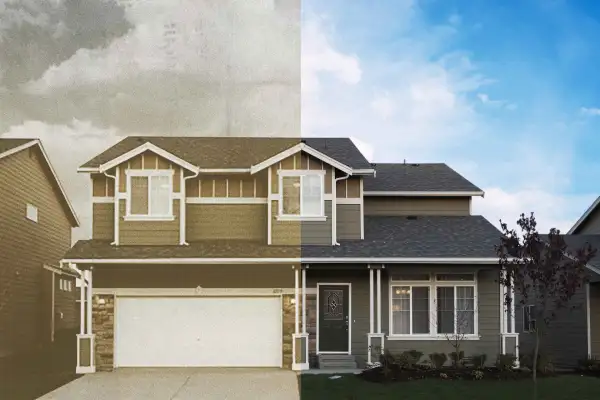Then and Now, 1980: This Isn’t the First Tough Housing Market We’ve Faced

We just launched Money Archives, a new experience where we're digitizing decades of our print Money magazines. This is the second in a series of Then and Now stories that examine how personal finance — and our coverage of it — has evolved over time.
Homebuying has always been a balancing act. Sometimes the market favors the buyer; sometimes it favors the seller. In between, there’s always a transition period: A mercurial, often-strange-feeling time when the market is shifting from one side to the other.
We’re in the middle of that shift right now. But while current conditions may be worrisome in regards to what the future holds, it’s not the first time we’ve lived through a changing — and challenging — market.
In a March 1980 story headlined “Bottom Dollar for a Tip Top House,” writer Edward E. Scharff explored a housing market that was in flux and bears more than a few similarities to what we’re seeing today.
In the late ’70s, the economy was facing a tough time. Inflation was running at about 14% thanks to two oil embargos in the previous years that had sent consumer prices skyrocketing — including home prices. Nationally, home values increased 14% in 1979, although many markets saw prices grow more than 20%. It was a seller’s market. Buyers were purchasing homes regardless of condition.
Enter the Federal Reserve, which started raising interest rates to bring inflation back under control. By the time Scharff wrote his story, mortgage rates had surged to 15% (a huge jump, given that rates averaged between 8% and 10% from 1973 to 1978). Many buyers couldn’t afford the higher mortgage payments.
Increasing rates helped slow demand for housing. While interest rates rose, home prices started to come down, and those buyers who remained in the market began to gain the upper hand.
“No buyer now needs to say ‘I’ll take it’ without scrutinizing the house to make sure the price is justified,” wrote Scharff.
Instead, buyers were finding more options to choose from as homes sat longer on the market. And while some homeowners who didn’t need to sell decided to hold off until prices recovered, those who kept their homes on the market had to adapt. Prices became negotiable, with many sellers accepting offers 10% under asking price.
Sound familiar? In 2022, we’re seeing the same change in the housing market.
The COVID-19 pandemic and the ensuing lockdowns in 2020 set off a series of events that led to one of the hottest home buying booms in history. The explosion of remote work, coupled with the need to self-isolate, meant houses became more than just places to unwind after work. They evolved into the office, the gym, the school and the entertainment center — often all at the same time.
As the country shut down, the Federal Reserve got to work. It slashed interest rates down to near zero as a means of injecting money into the economy and lowering the cost of borrowing. As a result, mortgage rates plummeted, reaching an all-time low of 2.65% on Jan. 7, 2021.
For most of the past two years, homebuyers have taken advantage of historically low rates to trade up and move out. Lower rates meant lower monthly payments on larger mortgages, making it more affordable for buyers to upgrade to larger homes that offered more space. Living in the suburbs became cool again.
As demand for homes increased, buyers were faced with a new challenge. There weren't enough houses for sale to meet the rising demand. Competition for available homes increased, leading to bidding wars and home values increasing by more than 20% year over year. In some markets, home sellers began setting ridiculous prices just to see what would happen. (Definitely a seller’s market.)
But in March of this year, the market started to shift. With inflation running above 8% — and showing no signs of slowing — the central bank set about hiking interest rates.
Since then, mortgage rates have soared by nearly 3% percentage points. The fast rise in rates has led to a slowdown in demand, as potential homebuyers are being priced out of the market.
Which brings us back to a shifting market.
While higher mortgage rates have pushed many potential buyers out of the market for now, for those who remain, there are more opportunities to find a home. Inventory has improved, although it’s still low compared to pre-pandemic times. With less competition, bidding wars aren’t as common, contingencies are back en vogue and more homes are being sold for below their asking price.
With mortgage rates expected to keep rising for the foreseeable future, many experts are predicting the housing market will see a correction within the next year. Much like in the ‘80’s, home prices will continue to fall, inventory will continue to improve and the market will become more quote-unquote “normal.”
How long this transition may take is uncertain. The 1980 market conditions lasted through 1983, with mortgage rates peaking over 18% in the fall of ’81 before beginning a slow descent. If history repeats itself, that means folks who stick it out today may very well find themselves in a buyers market by this time next year.
Visit Money Archives.

